Now that kindergarten has been in session for several weeks, things are starting to feel a bit more routine in classrooms across Virginia. Students know a lot more about school, and you know a lot more about your students. PALS-K scores are in, and you have baseline information about students’ reading skills. You and your students are digging into the important and exciting task of learning to read!

Now I Know my ABC’s
For kindergartners, understanding that letters have sounds and sounds make words is a huge milestone! Helping students become fluent decoders is an important instructional goal in kindergarten and beyond. Your PALS-K results are a great place to look to better understand what students know about letters, sounds, and spelling.
Next Time Won’t You Sing with Me!
But wait! It’s not just the ABCs! There is a second, equally important, aspect of reading to keep in mind this year. This is the part that makes reading ‘sing.’ Perhaps reading the passage below will help you guess what it is:
The humernians slought the baros to the hignists. The hignists were kimpfa. The baros uffed the brengy duys. The humernians gericked and quandled.
Decoding this passage was probably no trouble for you, a fluent reader! But surely you found it impossible to comprehend. You weren’t truly reading. Why? Because decoding isn’t enough– readers must also comprehend what they read. Once words are decoded, understanding requires language skills. Growing kindergartners’ language skills are an equally important part of reading instruction.
Beyond the ABCs
As you plan for teaching letters and sounds, how do you also intentionally grow language skills in kindergarten? By talking and reading with kids every day! Luckily, you are probably already in the habit of doing these two things with your chatty, curious kindergartners. But how can you get even more power out of conversations and stories? By planning for them as part of reading instruction. Talking while reading books is a great time for rich language development. So grab a favorite book and try the ideas below to teach new words, model advanced language, make connections between spoken words and print, and help students use language to show their understanding.
Here are some ideas to try:
1. Before reading: Lead a rich discussion about the cover of the book. Have students discuss the title, talk about the illustration, identify the characters, predict what the story might be about, and share any related experiences.
2. During reading: Talk about three unfamiliar words. Point to the word in the book, read the word to the students, ask students what it might mean, explain the definition, and have students act out verbs or show students pictures of nouns.
3. After reading: Share favorite parts. Have students retell their favorite part. Ask students to describe a favorite book event, turn to that page and ask students to describe the picture, and when they finish describing, ask them to add two additional details.
As you get started trying out these ideas, it can be helpful to use sticky notes to flag places where you want to talk with students during reading. You may want to print off pictures to support vocabulary development, or jot down questions to be sure to ask students. Whatever your method, be ready for students to talk, talk, talk as you read! Because that’s really what language development (and building strong readers) is all about!

